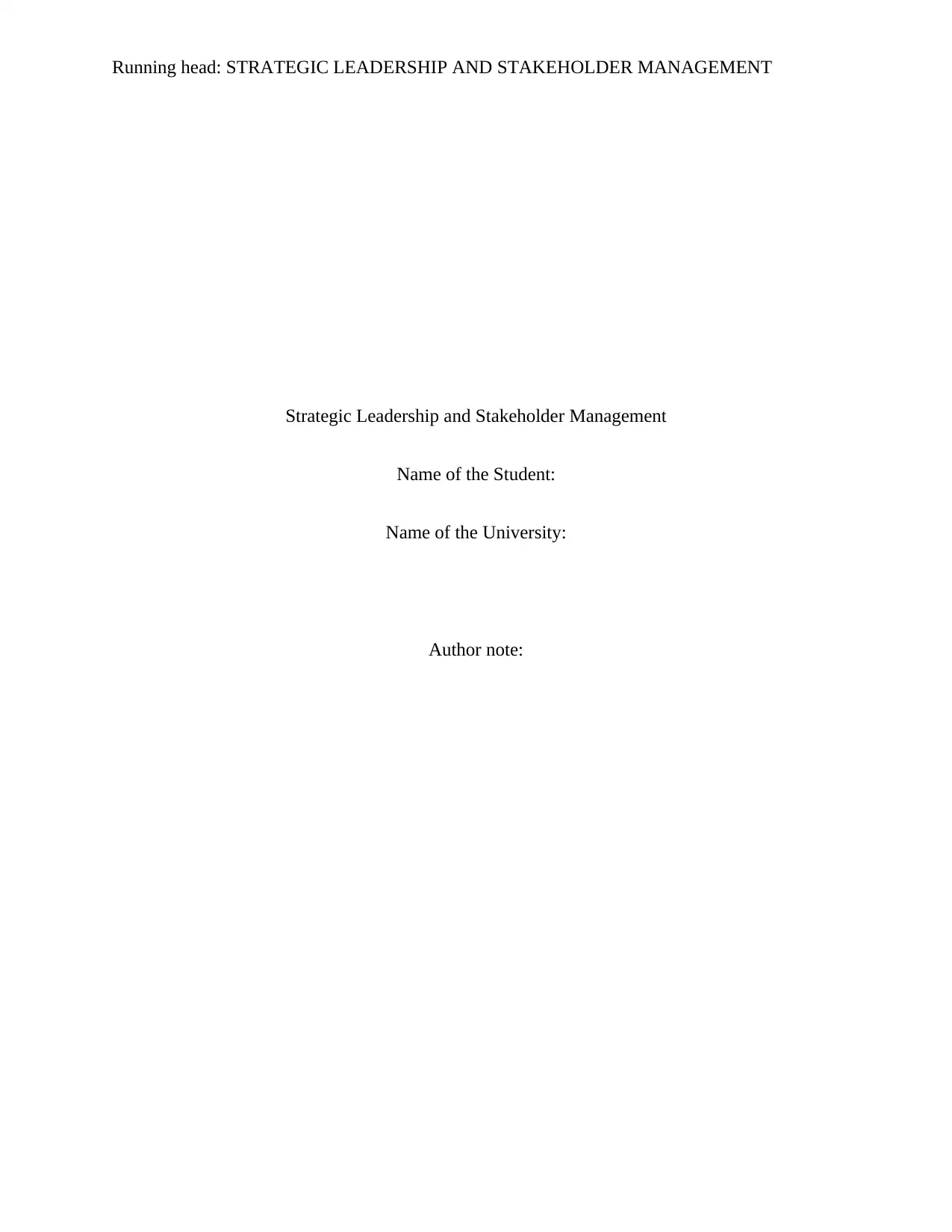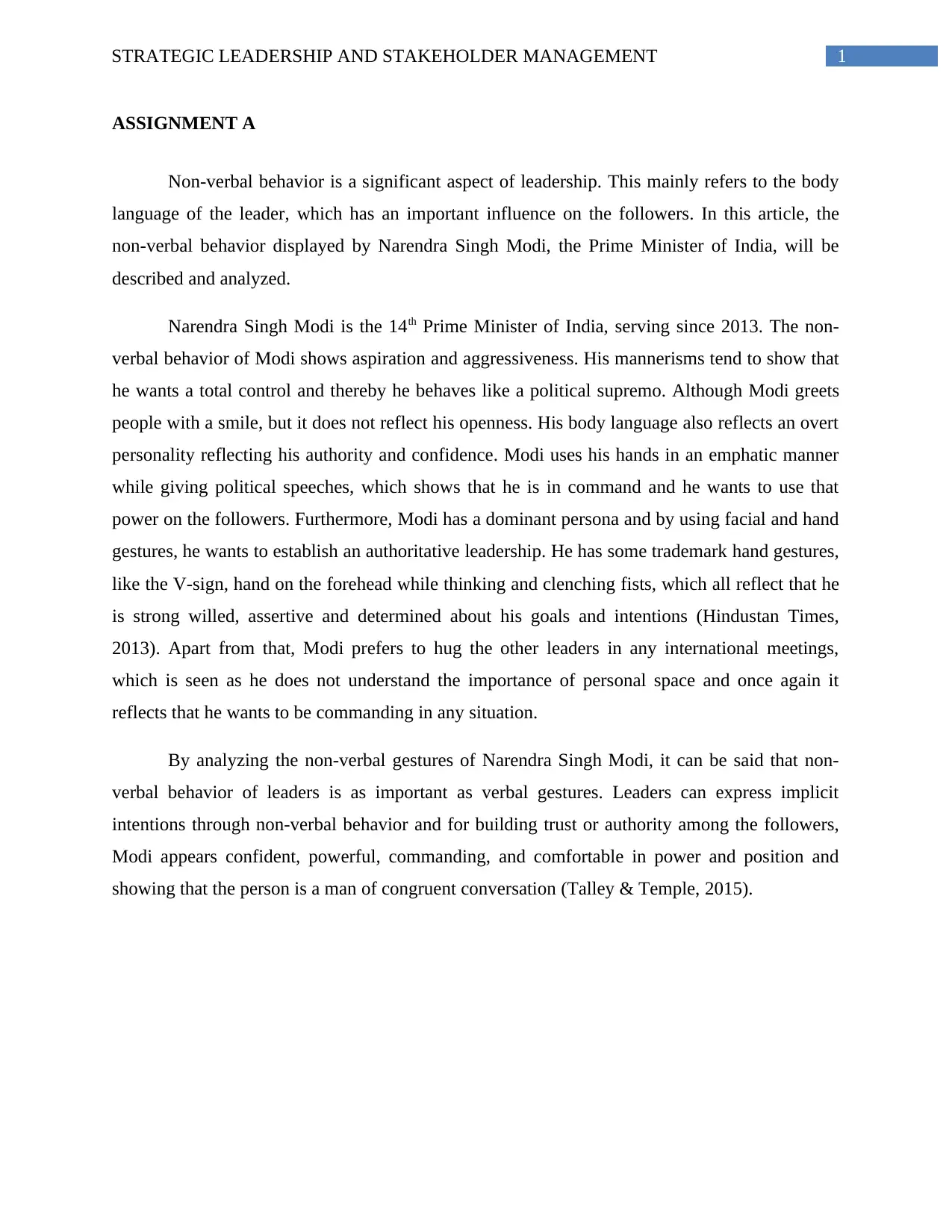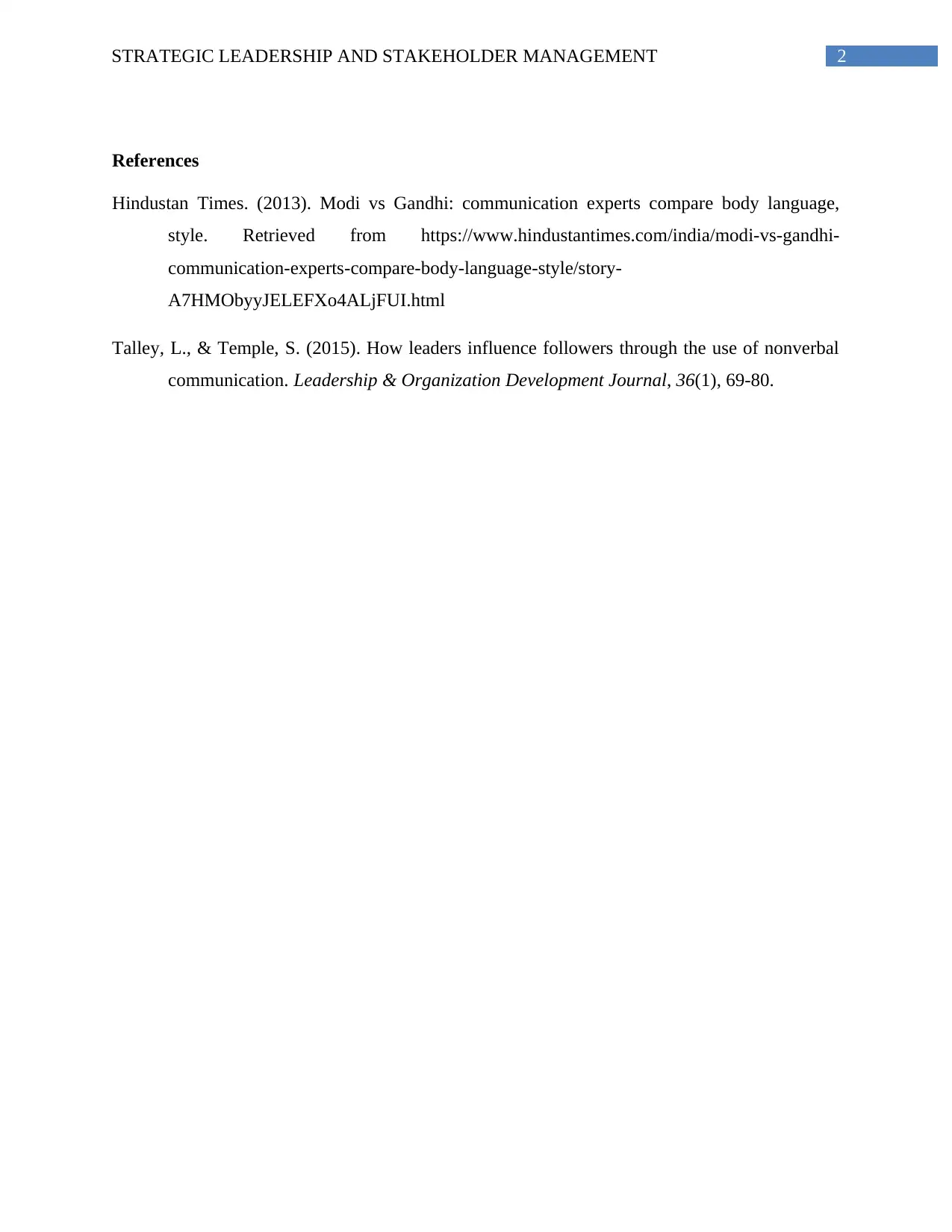Strategic Leadership: Stakeholder Management & Modi's Non-Verbal Cues
VerifiedAdded on 2023/04/07
|3
|386
|460
Essay
AI Summary
This essay explores the significance of non-verbal behavior in strategic leadership, focusing on the body language and mannerisms of Narendra Singh Modi, the Prime Minister of India. It argues that Modi's non-verbal cues, such as hand gestures and facial expressions, reflect his aspiration for control and an authoritative leadership style. The analysis covers specific gestures like the V-sign and hugging, interpreting them as indicators of strength, assertiveness, and a desire to command. The essay concludes that non-verbal behavior is crucial for leaders in building trust and authority, suggesting that Modi's confident and powerful demeanor reinforces his position and message. References to communication experts and leadership studies support the analysis, highlighting the importance of congruent conversation between verbal and non-verbal cues.
1 out of 3






![[object Object]](/_next/static/media/star-bottom.7253800d.svg)